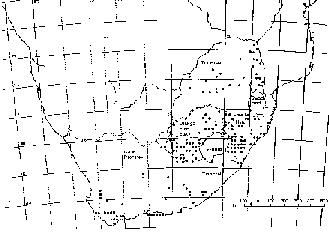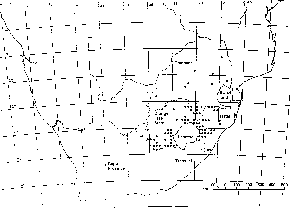 |
Last Update:
Friday November 23, 2018
|
| [Home] |
|
Volume 5 Pages 1 - 83 (March 1990) Citation: Rowe-Rowe, D.T. (1990) Otter Distribution and Protection in South Africa. IUCN Otter Spec. Group Bull. 5: 17- 23 Otter Distribution and Protection in South Africa David T. Rowe-Rowe Natal Parks Board, PO Box 662, Pietermaritzburg, 3200 South Africa
Two otter species occur in South Africa : the Cape clawless otter Aonyx capensis and the spotted-necked otter Lutra maculicollis. DISTRIBUTION The most recent detailed information on otter distribution in each of the four provinces of South Africa has been separately presented by Lynch (1983) for the Orange Free State, Rautenbach (1982) for Transvaal, Rowe-Rowe (1978) for Natal, and Stuart (1981) for the Cape Province. The records have been combined to indicate overall distribution of each of the two otters in South Africa (Figure 1 and Figure 2).
A. capensis occurs throughout the eastern half of the country and along the southern coast. It is absent from the arid western interior, occurring only along the perennial Orange River. L. maculicollis is not as widely distributed as is A. capensis, being limited to inland waters in the eastern half of South Africa, and not extending as far north as does A. capensis. There are no published records of otter occurrence in the coastal littoral between the Cape Province and Natal (Transkei), and the local nature conservation authorities have not undertaken faunal surveys. Anglers have, however, reported sightings and signs of otters, therefore I believe that the distribution of A. capensis is continuous from Natal to the Cape Province. In South Africa rainfall decreases from east to west: 750 mm to over 1000 mm in Natal, decreasing to less than 100mm on the west coast. Otters occur mainly where rainfall exceeds 500 mm, roughly east of 25º E and along the southern coast. A. capensis enjoys a wider distribution and is more abundant than is L. maculicollis . The reason appears to lie in the fact that A. capensis has evolved primarily as a feeder on crabs, whereas L. maculicollis is better adapted for fish capture (Rowe-Rowe, 1977). Fish populations in South African inland waters are low, therefore L. maculicollis has to supplement its diet with crabs. Owing to its smaller size and less molariform teeth, L. maculicollis is limited to taking small crabs (Rowe-Rowe 1977). In the waters of central Africa, which support large freshwater fish populations, L. maculicollis lives almost entirely on fish, and is the dominant otter (Lejeune and Frank, 1990) . In South Africa the opposite obtains with A. capensis existing in streams in which there are few or no fish, but where crab and frog (Xenopus) numbers are adequate. Along the southern coast, marine organisms are also taken (van der Zee, 1981). PROTECTION Each of the four provinces in South Africa has its own nature conservation ordinances. In the cape province, Aonyx capensis (Lutra maculicollis does not occur there) is protected in nature reserves and may not be hunted without a permit outside of protected areas. In the other three provinces, otters are protected in nature reserves but are not listed as protected animals outside of reserves. Trade in live animals or animal products is not allowed, however. Recently collected information (1989) indicates that protection within nature reserves appears to be adequate. Otters occur in 65 reserves in the Cape Province, 34 in Transvaal, 33 in Natal, and 11 in the Orange Free State. In addition they are present in nine national parks, controlled by the National Parks Board. The total number of protected areas in which otters occur is therefore 152 out of the national total of 249 areas.Some of the protected areas in which otters have been recorded are small (100- 300 ha), and may include only a few hundred metre of stream. The fact that otters occur there, however, suggests that the habitat of the surrounding land is still in good condition. On the other hand, many other reserves are large (30 000 to 80 000 ha) and include important mountain catchments with numerous streams (particularly in Natal and the Cape Province), or large wetlands. The killing of otters outside of protected areas is not a serious threat. They are shot occasionally by some farmers who believe that otters have a major impact on sport-fishing, or when poultry losses are experienced. In some areas traditional hunters with dogs, or dogs on their own, harass otters. (The increasing number of dogs in South Africa impose threats to most forms of wildlife). The real threats to otters emanate from South African's rapidly increasing human population. Urban expansion is responsible for loss of habitat and industrial pollution. The need to produce more food, and to grow cash crops, means that more land (particularly grassland) comes under the plough each year. Overgrazing, particularly in subsistence farming areas is also a serious problem, leading to increased water runoff, soil loss, and siltation of streams. Nature conservation and Department of Agriculture authorities are doing their best to promote environmental awareness and conservation. In Natal, for example, there are over 30 wildlife extension officers in the field, outside of protected areas, who liase with agricultural extension officers in promoting wise use of resources and sound agricultural practices. ACKNOWLEDGEMENTS - Dick Carr, Niël Ferreira, and Peter Lloyd are thanked for the information on the occurrence of otters in protected areas outside of Natal.. REFERENCES Lejeune, A. and Frank, V. (1990) Distribution of
Lutra maculicollis in Rwanda: Ecological constraints IUCN
Otter Spec. Group Bull. 5: 8- 16 |
| [Copyright © 2006 - 2050 IUCN/SSC OSG] | [Home] | [Contact Us] |

